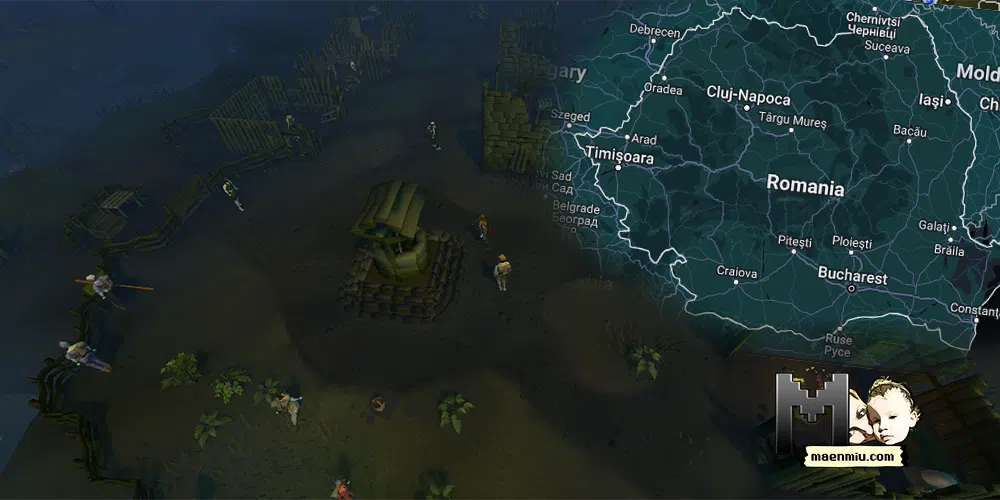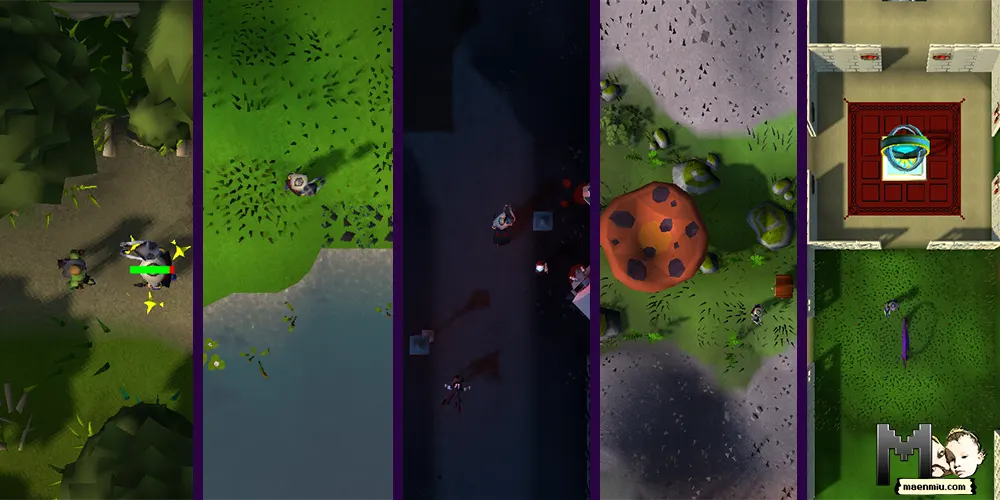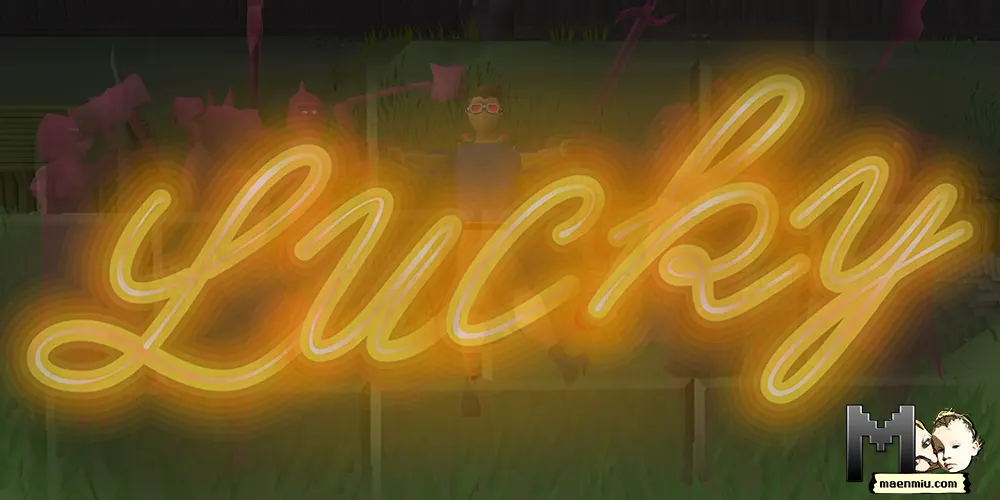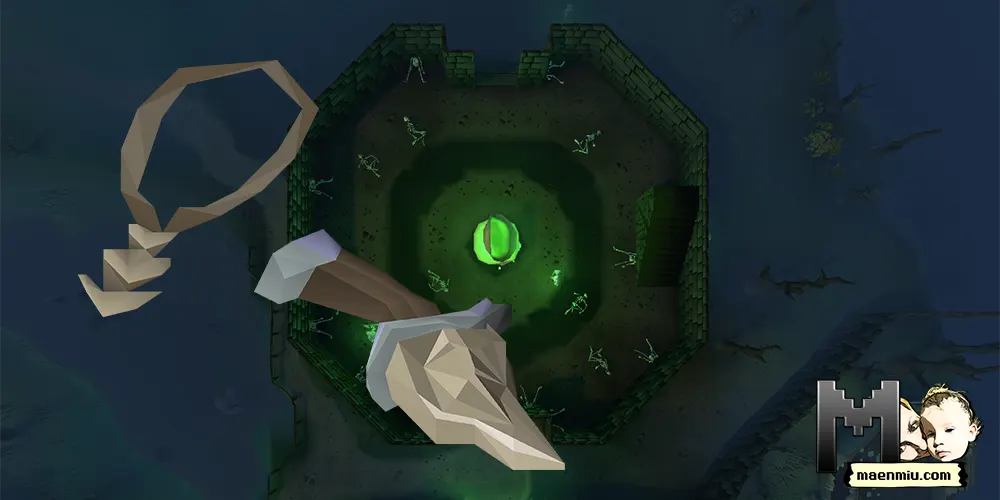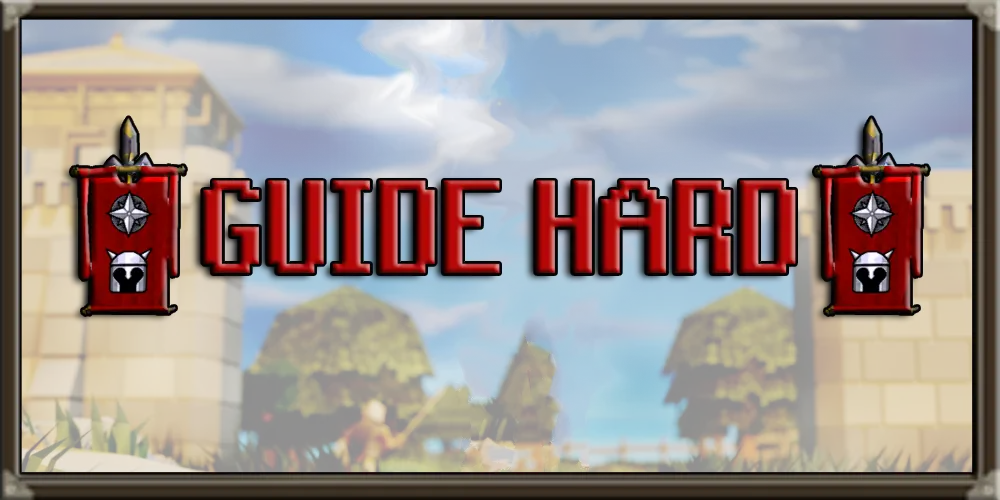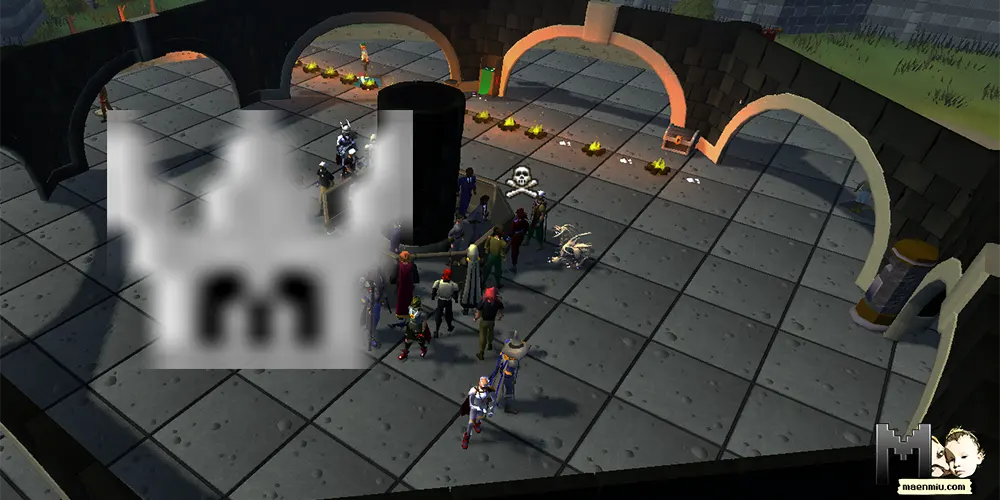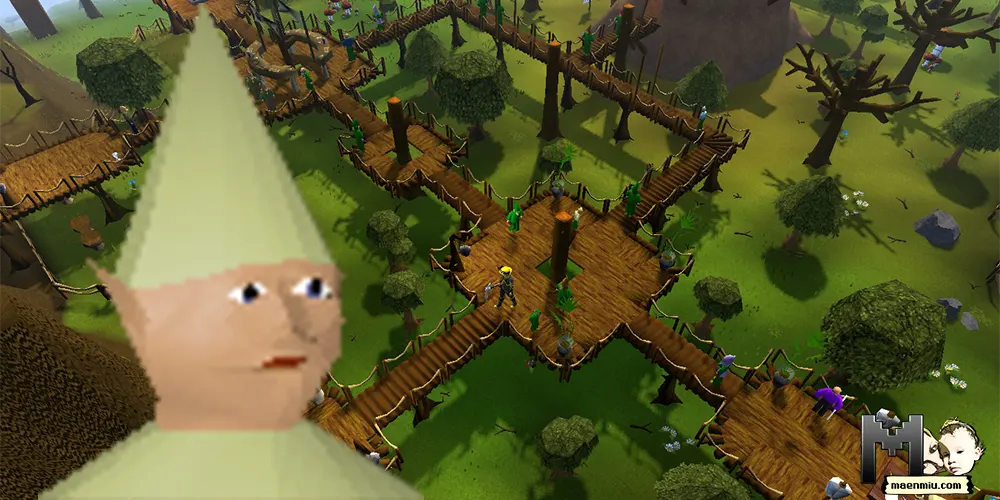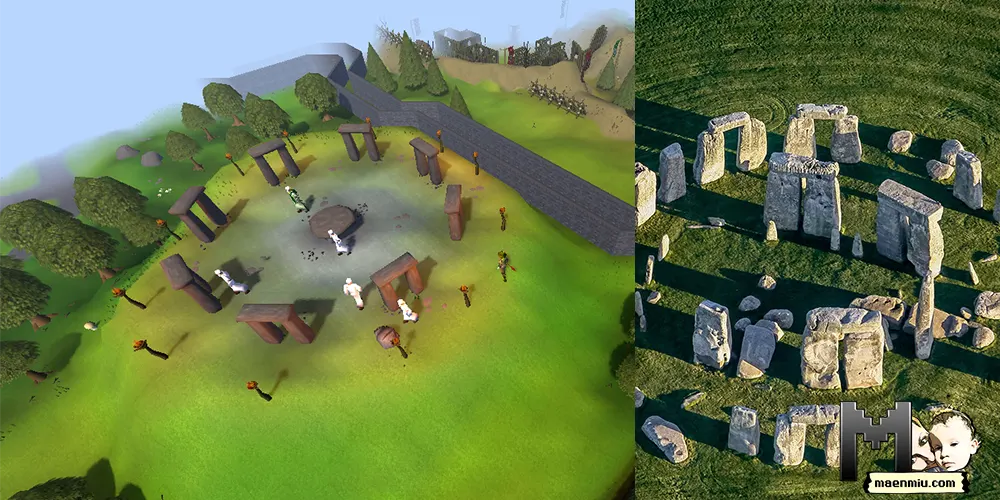
The world of Old School RuneScape (OSRS), a beloved and massive multiplayer online role-playing game (MMORPG), teems with fascinating mysteries, legendary tales, and diverse cultural representations. One such emblematic place in this expansive gaming universe is the Druid’s Ring, located near the iconic city of Falador, just north of Taverley. This stone circle shares an uncanny resemblance to the historic Stonehenge, igniting a shared curiosity among players and historians alike. I love exploring the connections between game stuff and irl stuff and writing intriguing parallels between these two.
You might like
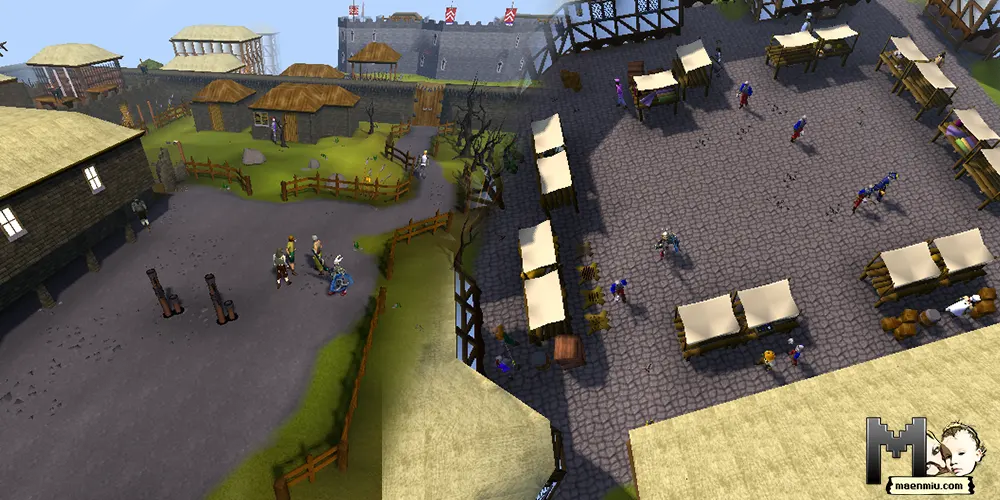
The Druid’s Circle in Old School RuneScape
In the verdant and idyllic setting of Taverley, just southwest of Falador, players encounter the Druid’s Circle. Central to several quests in the game, the Druid’s Circle serves as a hub for druidic magic, rituals, and traditions. Similar to Stonehenge, the Druid’s Ring is an open-air circular structure made of monolithic stones, further accentuated by a primal, mystic energy that permeates the area. It stands as a testament to the fantastical world’s deep-rooted connection with ancient cultures, predominantly Celtic, embodied in the form of druidism.
Druids in OSRS
Druids in Old School RuneScape (OSRS) are a critical component of the game’s lore, deeply steeped in a mythology influenced by Celtic traditions. Inhabiting the verdant village of Taverley and the surrounding areas, they are distinguished by their nature-oriented practices and the use of magic grounded in the natural world. Players often encounter druids around the Druid’s Circle near Falador, a place of powerful energy and mysticism reminiscent of ancient stone circles such as Stonehenge.
Key to numerous quests and the basis of the Herblore skill, the druids provide essential knowledge and wisdom to players. Their rituals, magical practices, and beliefs, heavily influenced by Celtic druidism, underline the game’s commitment to incorporating elements of ancient cultures and traditions, creating a richer and more immersive gaming experience. There are also chaos druids throughout the game and you might end up killing them for their herb drops as an ironman.
Druidic Ritual
The Druidic Ritual quest in Old School RuneScape (OSRS) serves as a gateway for players to access the fascinating skill of Herblore. Initiated by speaking with Kaqemeex in the Druid’s Circle in Taverley, the quest tasks the player with helping the druids brew a special potion to re-consecrate their stone circle. This journey involves obtaining raw meat from four specific creatures, enchanting them through a ritual inside the Taverley Dungeon, and then returning them to Sanfew, the quest’s secondary character. Successful completion of the Druidic Ritual quest unlocks the Herblore skill. This skill represents the druidic connection to nature, allowing players to create a variety of potions and elixirs from herbs and secondary ingredients.
Herblore
The Herblore skill in Old School RuneScape mirrors the significant role of plants and natural remedies in Celtic culture, showcasing the deep-seated connection between the Celts and their natural environment. Ancient Celts held a belief in the profound healing and transformative powers of nature, a concept embodied by the druids, their revered spiritual leaders. Druids, according to Celtic lore, possessed extensive knowledge of the plant world and used this wisdom to create potions, remedies, and magic. Similarly, the Herblore skill in OSRS allows players to concoct various potions with beneficial effects, imbuing a sense of the Celtic druid’s intimate knowledge and respect for nature. By integrating this skill into the game, OSRS provides a subtle nod to the traditions of Celtic herbalism, further deepening its homage to the rich and mystical aspects of this ancient culture.
Stonehenge
Stonehenge, located in Wiltshire, England, is a prehistoric monument dating back to around 3000 BC. Its primary construction consists of a ring of standing stones, each around 13 feet high, seven feet wide, and weighing around 25 tons. It’s a masterpiece of engineering and a symbol of the enduring mystery of prehistoric human societies.
Historians and archaeologists postulate that Stonehenge could have served numerous purposes, ranging from a celestial observatory to a sacred burial ground. Its association with druidic practices is mostly based on speculation and romanticized mythology, as the monument predates the period associated with the Druids by at least a millennium. Despite this, the image of the ancient Druids performing rites in the shadow of these colossal stones remains culturally ingrained.
Celtic Traditions and Mysticism in OSRS
The depiction of the Druids in OSRS draws heavily from the traditional Celtic druidic practices. Druids in Celtic societies were revered members, often holding roles such as philosophers, teachers, and judges. Similarly, in OSRS, they are portrayed as keepers of ancient wisdom and wielders of nature-based magic.
Many aspects of the game reflect the complex, intertwined nature of Celtic mysticism. The Druidic Ritual quest introduces players to the basics of Herblore, a skill strongly rooted in the knowledge of plants and nature, mirroring the Druids’ reverence for nature in Celtic lore.
Moreover, the circle of stones in Taverley, the Druid’s Circle in OSRS, is a potent emblem of the Celtic belief in the cyclical nature of life, the seasons, and time. This belief mirrors the speculated astronomical significance of Stonehenge, which some propose was used to track solar and lunar cycles.
Linguistic Connections
The linguistic connections between the game and real-world ancient cultures are also noteworthy. The term “Druid” itself originates from ancient Celtic cultures, derived from the old Celtic word ‘druwid-‘, which means ‘oak-knower’. This etymology is reflected in the druidic characters of OSRS, their affinity for nature, and their stone circle reminiscent of Stonehenge.
Furthermore, the name ‘Falador’, the city closest to the Druid’s Circle in OSRS, bears a phonetic similarity to the Gaelic word ‘Fál’, meaning hedge or fence, and ‘dor’, a Proto-Indo-European root meaning door or gate. This linguistic connection subtly underscores the Druid’s Circle’s role as a gateway to the arcane and ancient wisdom of the druids in the game.
Taverley, the town that hosts the Druid’s Circle in Old School RuneScape (OSRS), might not yield direct connections to historical Celtic words or druidic tradition in the real world.
Final thoughts
The Druid’s Circle in OSRS offers an intriguing blend of fantasy and ancient Celtic mysticism, providing players with a virtual experience of ancient traditions and beliefs. While not directly linked to Stonehenge historically, the visual similarities and underlying themes of cyclical time, reverence for nature, and ancient wisdom form a symbolic connection between these two iconic circles of stone. As players navigate their avatars through the mesmerizing realm of Gielinor, they are subtly immersing themselves in a rich tapestry of ancient traditions and practices, thus highlighting the influence of ancient cultures on the creation of modern fantasy worlds.

